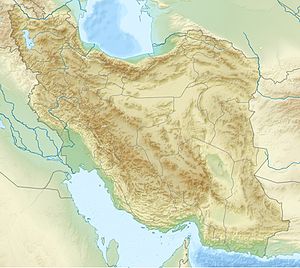| Location | Iran |
|---|---|
| Region | West Azarbaijan province |
| Coordinates | 36°59′40″N 45°28′28″E / 36.9944°N 45.4744°E |
| Type | tell |
| Length | 200 metres (660 ft) |
| Width | 140 metres (460 ft) |
| Height | 10.3 metres (34 ft) |
| History | |
| Periods | Neolithic, Chalcolithic, Late Bronze Age/Iron Age, Islamic |
| Site notes | |
| Excavation dates | 1936, 1958, 1960, 1961, 1968 |
| Archaeologists | A. Stein, C. Burney, T. Cuyler Young Jr., R.H. Dyson, Mary M. Voigt |
Hajji Firuz Tepe is an archaeological site located in West Azarbaijan Province in north-western Iran and lies in the north-western part of the Zagros Mountains. The site was excavated between 1958 and 1968 by archaeologists from the University of Pennsylvania Museum of Archaeology and Anthropology. The excavations revealed a Neolithic village that was occupied in the second half of the sixth millennium BC where some of the oldest archaeological evidence of grape-based wine was discovered in the form of organic residue in a pottery jar.[1][2]
- ^ Harding 2005, p. 7
- ^ McGovern et al. 1996

